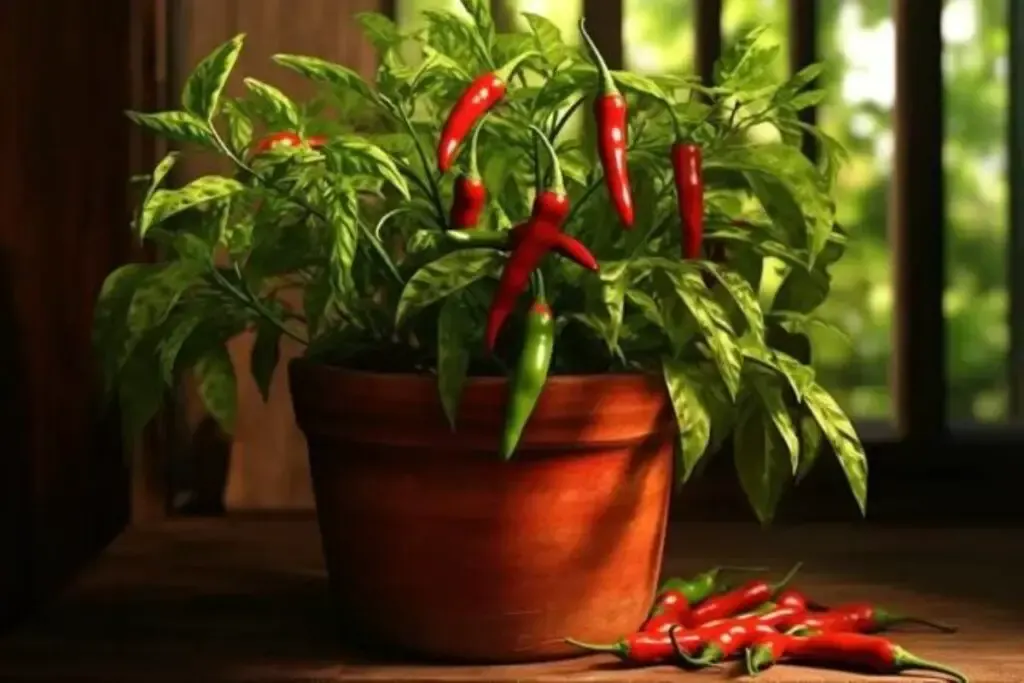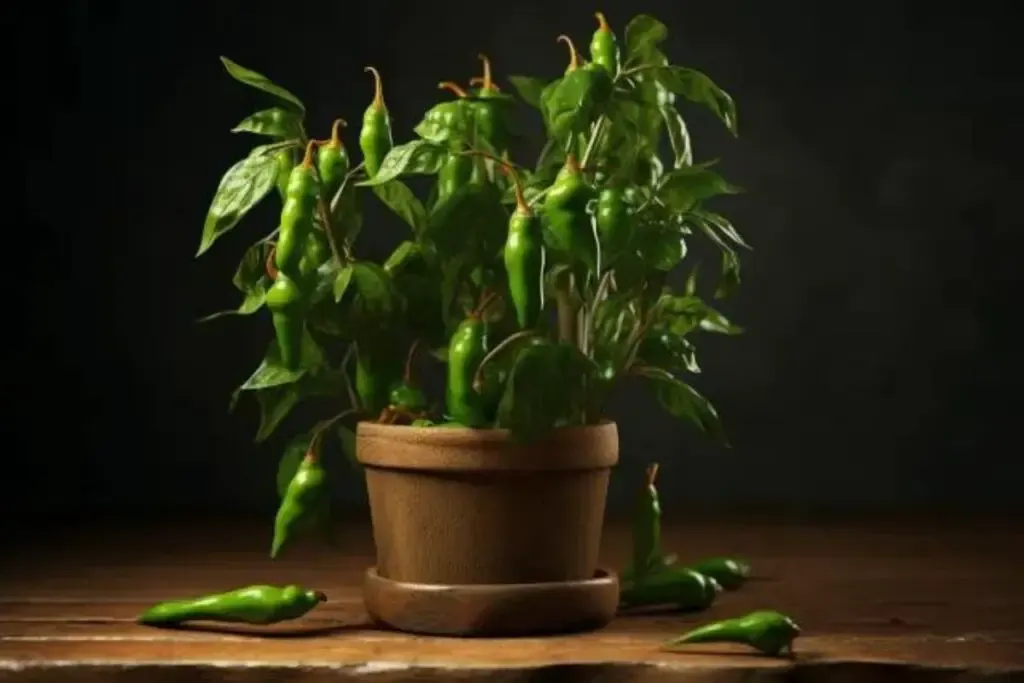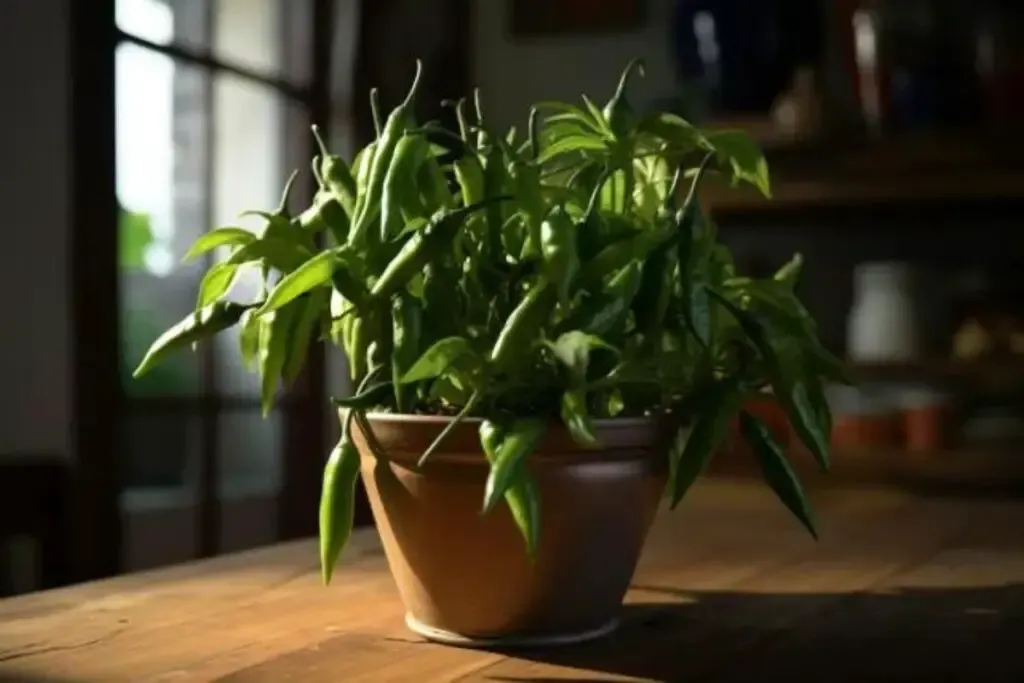Growing jalapenos in pots is not only a fun and spicy adventure for your taste buds, but it’s also an excellent solution for urban gardeners, those with limited space, or anyone looking to add a zesty flair to their patio or windowsill garden.
As an avid gardener who has navigated the challenges and savored the victories of container gardening, I’m here to share the heat of my experiences and guide you on the path to harvesting your homegrown peppers.
With a little care, the right conditions, and a touch of gardening love, your pot-grown jalapenos can be as bountiful as those grown in sprawling gardens.
Do Jalapenos Grow Well in Pots?
Absolutely! Jalapenos are particularly well-suited to container gardening. They don’t require a lot of root space, making them perfect candidates for pot cultivation. Plus, growing jalapenos in pots allows you to control the environment more effectively, ensuring your peppers get the perfect amount of sunlight, water, and nutrients they need to thrive.
One key advantage of pot-grown jalapenos is mobility. You can move your plants to chase the sun or shelter them from harsh weather conditions—a flexibility that’s not as easy to achieve with in-ground plantings. Moreover, pots can also help prevent soil-borne diseases and keep pesky garden pests at bay.
To get started, choose a pot that’s at least 10-12 inches deep and has good drainage. Jalapenos love the sun, so place them where they’ll get at least 6-8 hours of direct sunlight a day.
Regular watering is vital, but be careful not to overwater, as soggy soil can lead to root rot. A consistent, well-draining soil will keep your jalapenos happy and stress-free.
Best Jalapeno Varieties for Pots
When selecting jalapeno varieties for pot cultivation, consider the size of the plant and the heat level you prefer. Some varieties are bred for compact growth, making them ideal for container gardening, while others might offer a milder flavor for those who don’t want their jalapenos to pack too much of a punch.
Let’s dive into a few varieties that I’ve found to be exceptional for pots:
1. Jalafuego

Jalafuego is a powerhouse of pepper that stands out for its robust growth and exceptional yield. This particular variety grows vigorously, producing large, uniform jalapenos that have a classic sharp heat level.
The peppers are perfect for those who love a spicy kick in their cuisine. Because of its prolific nature, Jalafuego is an excellent choice for gardeners looking to get a lot of bang for their buck out of a single pot.
2. Mucho Nacho

Mucho Nacho is a variety that lives up to its name—it’s larger than the average jalapeno and packs a lot of flavor.
These peppers are slightly milder in heat, which makes them ideal for stuffing, grilling, or using in recipes where you want the jalapeno flavor without overwhelming spiciness. The plants are compact and bushy, which suits them well for container life, ensuring they don’t outgrow their home too quickly.
3. Tam Jalapeno

For those who prefer their peppers on the milder side, the Tam Jalapeno variety is a winner. It offers the same look and feel as a traditional jalapeno but with less heat, making it a family-friendly option.
The plants are perfect for pots due to their moderate size and produce a generous amount of fruit throughout the season. The Tam Jalapeno is a testament to the fact that sometimes, less is more, especially when it comes to the capsaicin level.
How to Grow and Care For Jalapenos in Pots
Nurturing jalapenos in pots is an engaging endeavor that brings the zest of gardening right to your doorstep. As someone who has experienced the joys and occasional woes of growing these piquant pods,
I’ll guide you through each step to ensure your jalapenos reach their full potential.
Planting
Begin your jalapeno journey by choosing high-quality seeds or starter plants. If you’re starting from seeds, sow them indoors 8-10 weeks before the last frost date.
They need warm soil to germinate, so a heat mat can be a pepper’s best friend during this stage. Once the seedlings have a few sets of true leaves and outdoor temperatures are consistently above 50°F, they’re ready to transition to pots.
Pot Size
For jalapenos, size does matter when it comes to pots. A 10-12 inch deep container is the minimum size to accommodate the root system comfortably.
However, I often opt for a 14-16 inch pot to give my plants ample room to flourish without frequent repotting. Ensure the pot has sufficient drainage holes to prevent waterlogging.
Light
Jalapenos are sun worshippers, craving at least 6-8 hours of direct sunlight each day to produce those fiery fruits. Place your pots in a sunny spot where they can bask in the sun’s rays.
If you’re short on sunlight, consider supplementing with grow lights to keep your plants energized and productive.
Soil
A well-draining potting mix is crucial for jalapeno health. I recommend a blend that includes peat, perlite, and vermiculite to ensure good drainage and aeration.
Avoid heavy garden soils which can compact in pots, making it hard for roots to breathe.
Water
Watering is where the art of balance comes into play. Jalapenos like their soil to be moist but not waterlogged. I find that watering deeply when the top inch of soil feels dry works wonders.
This may mean watering once a day in hot weather or less during cooler, cloudy days. Consistency is key—pepper plants don’t appreciate the stress of drought and deluge cycles.
Temperature and Humidity
These peppers prefer the warmer side of life, with daytime temperatures around 70-85°F and night-time temperatures not dipping below 60°F.
While they can handle some humidity, high humidity combined with cool temperatures can lead to fungal issues. So, keep the air circulation good to keep the plants happy.
Fertilizer
Feeding your jalapenos is essential for their growth. A balanced, slow-release fertilizer incorporated at planting time provides a steady nutrient supply.
I also like to pamper my plants with a half-strength, water-soluble fertilizer every 2-4 weeks during the growing season, especially when they start setting fruits.
Pruning Potted Jalapenos
Pruning is a topic that often divides gardeners, but when it comes to jalapenos, a little snip here and there can make a significant difference. As an advocate of this practice, I’ve seen how strategic pruning encourages bushier growth and increases fruit production.
When your jalapeno plant is about a foot tall, pinch off the growing tips at the top and sides. This encourages the plant to branch out, leading to more flowers and, subsequently, more peppers. Don’t be overzealous with your cuts; the goal is to shape the plant, not strip it bare.
Regularly check for any yellowing or damaged leaves and remove them to maintain good airflow and plant health. If you notice any small peppers that won’t mature before the season’s end, it’s best to remove those as well to redirect energy to the remaining fruit.
Overwintering
If you’re in a region where the mercury dips low, overwintering your jalapeno plants can extend their life and productivity into the next season. Jalapenos are perennial in their native climate, so with a bit of care, they can survive the winter indoors.
Before the first frost, bring your potted jalapenos inside to a space that’s cool yet free from frost, ideally where temperatures stay above 50°F. Scale back watering to keep the soil slightly moist, as the plant’s water requirements will decrease significantly.
Provide enough light during this semi-dormant period. A south-facing window or a grow light can serve this purpose. You’ll notice that growth slows or stops entirely, but don’t worry; this is natural.
When spring’s warmth is steady, gradually reintroduce your plants to the outdoors, first in a sheltered spot to avoid shock from the change in conditions. This process is known as “hardening off.” Once they’re acclimated, your jalapenos will be ready to resume their place in the sun and start a new cycle of growth and fruiting.
With these overwintering tips, you can enjoy the fruits of your labor across multiple seasons, making the most of your potted jalapeno plants.
